This painting is at once monumental, moving but very cheerful at the same time. Because the main subject, the knight's farewell to his beloved, represented in a tight framing shows a very naturalistic background with its meadow, its flowers, its wood, its river and its very beautiful colors. The painter is from the end of the 19th century or the beginning of the 20th century, and undoubtedly French as indicated by the canvas merchant's mark on the back of the stretcher (the Jules Chauvin house which was active at 33 rue du Dragon in Paris between 1895 and 1937).
The style is naturalistic and recalls the English painters of the 1890s inspired by the Pre-Raphaelites and Art Nouveau on religious and medieval themes and very close to nature with their meadow, flower and woodland settings. The English art historian John Christian spoke of the last English Romantics in relation to these painters of the end of the century, Burne-Jones, Stanley Spencer and John William Waterhouse. We find in our painting by Waterhouse the very naturalistic motifs of meadow, flower, wood and river that we often see in Waterhouse. As for the composition, we think in particular of the English painter of Austrian origin Marianne Stokes and her painting "Aucassin and Nicolette" from 1898 (Private collection) which is very close to our painting with the same position of the two characters against each other, the lady's head leaning on the knight's chest and her hand held by him on his heart! The dimensions of these two paintings are also very close (124 x 81 cm).






















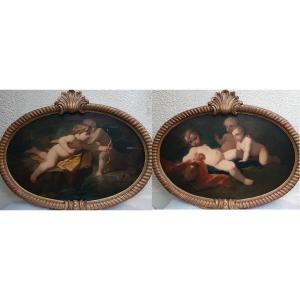


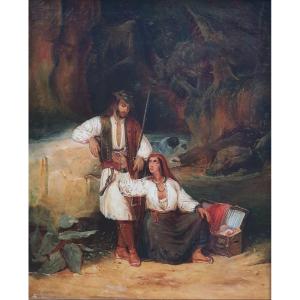


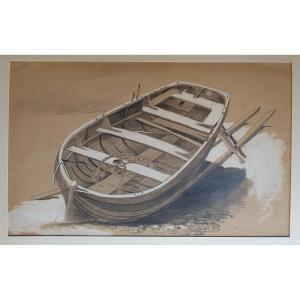

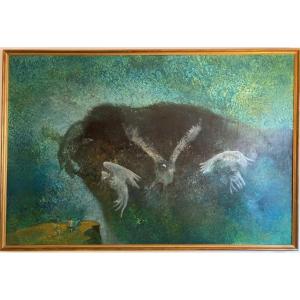





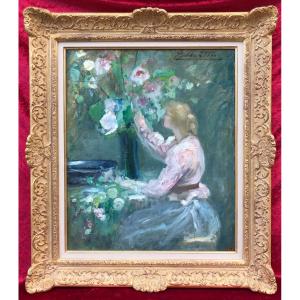

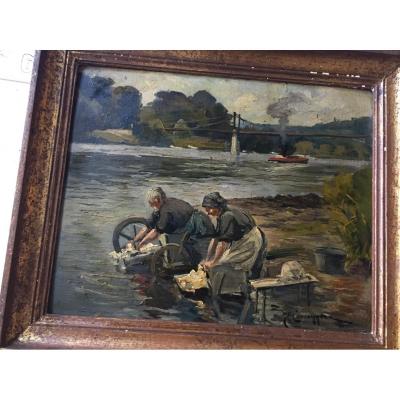



 Le Magazine de PROANTIC
Le Magazine de PROANTIC TRÉSORS Magazine
TRÉSORS Magazine Rivista Artiquariato
Rivista Artiquariato